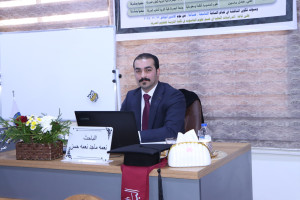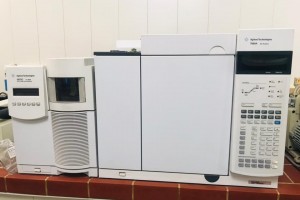
The College of Education for Pure Sciences in the Department of Life Sciences discussed a master’s thesis on (study of the species of the metal fly family Calliphoridae phenotypically and molecularly in Basra Governorate)
The message submitted by the researcher (Yasmine Saleh Kazem) included:
Diagnosis of four species of the metal fly family, Cahalliphoridae, phenotypically and molecularly, in Basra Governorate. The identified species are Chrysomya megacephaia, Chrysomya albiceps, Calliphora vicina, and Lucilia sericata.
Molecular diagnosis of the species was carried out using polymerase chain reaction (PCR) technology to amplify the Cytochrome Oxidase I (COXI) gene. The results also showed the extent to which the genetic sequences of the studied species matched their corresponding species globally, with a match rate of 100-99%. The molecular results were recorded and preserved in the National Center for Molecular Technology Information. NCPI has numbers specific to each species, and evolutionary trees have been drawn for each of the four species
The study examined the effect of temperature and humidity on the annual presence of all species of the metallic fly family over the course of an entire year. The study showed that there is a significant difference in the presence of species of the family in Basra Governorate, and that the spread of family species in the governorate poses a threat to the health of humans and their domestic animals.
The failure to record some species during the study period along with previously registered species may be due to differences in environmental conditions
Mission objectives
Given the great medical and economic importance and the wide spread of this family of flies, this study aimed to:
And collecting the species of the metal fly family spread in different areas of Basra Governorate.
Phenotypic diagnosis of species present in the local environment, photographing them, and creating a diagnostic key for them.
Confirming the phenotypic diagnosis of all insect species using molecular diagnosis.
Study of the monthly and annual occurrence of the entire metal fly family and its distribution in the study stations in Basra Governorate.
The message was recommended
Activating biosurgery and using Chrysomya albiceps in the treatment process
And disposing of animal carcasses, especially in residential areas, because they are a suitable environment for the adult females of the family to lay eggs
Preparing campaigns to control species of the metal fly family, as they are disease carriers of many pathogens.









